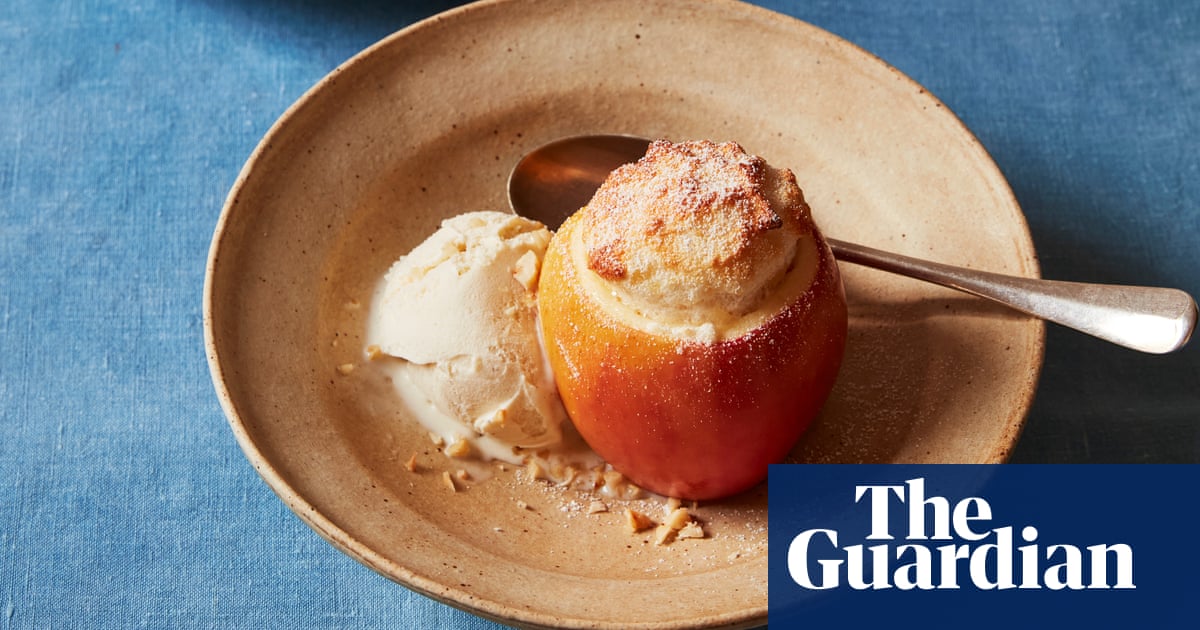Take souffle to the next level by baking it inside an apple. This retro dessert is easy and a bit of fun, too. The result is a soft, tender apple shell filled with light, airy souffle, perfect with lashings of vanilla ice-cream (which will hopefully form a delightful puddle when served with the hot pudding). Ideal for entertaining – it’s like eating the filling of an apple pie, but lighter.
Prep10 minCook1 hrServes44 eating apples, such as braeburn20g softened unsalted butter45g caster sugar, plus extra for dusting1 tsp cornflour2 egg whites20g blanched hazelnuts, roasted and chopped, plus extra to serve, if you likeIcing sugar, to dustVanilla ice-cream, to serveCut the tops off the apples and very carefully scoop out the flesh with a small spoon or melon baller, leaving about 4mm of flesh all around the edges of the shell. Remove and discard the cores and seeds from the scooped-out flesh – you will need 180g in total. Trim the bases off the apple shells and sit them flat on a baking tray.
Brush the insides of the apples with softened butter, then sprinkle in a little caster sugar and swirl to coat evenly. Put the apple shells in the fridge while you get on with the filling.Put the 180g apple flesh in a saucepan with 20g caster sugar and cook over a medium heat until completely softened. Stir in the cornflour and cook, stirring rapidly, for a few minutes, then take off the heat, blend smooth and leave to cool.Heat the oven to 190C (170C fan)/375F/gas 5. In a large bowl, whisk the egg whites until frothy, then add the remaining sugar bit by bit and whisk again to medium-stiff peaks. Fold the whisked egg whites into the cooled apple puree, until fully combined and smooth.
Take the apple shells out of the fridge. Sprinkle a few chopped hazelnuts into the base of each one, then spoon in the souffle, filling the shells right to the top. Bake for 12–15 minutes, until the tops are golden brown and the souffle has risen.
Garnish with more hazelnuts, if you like, sprinkle with some icing sugar and serve hot with scoops of vanilla ice-cream.
